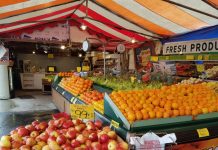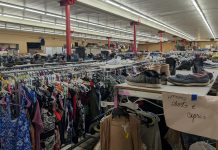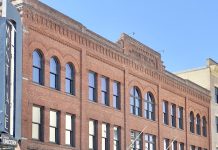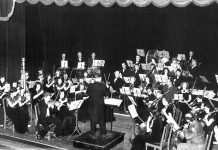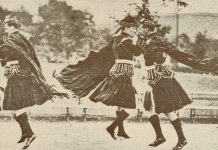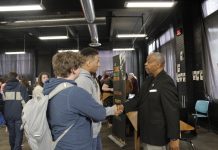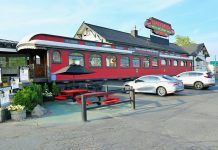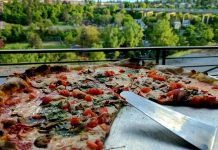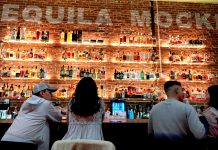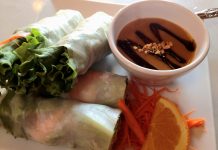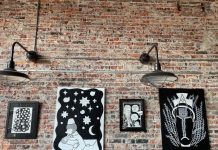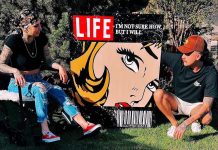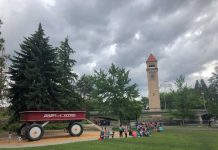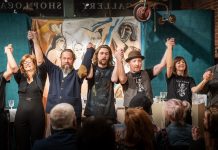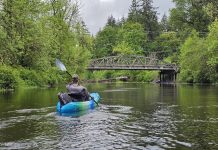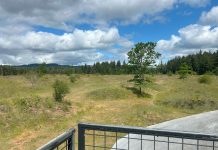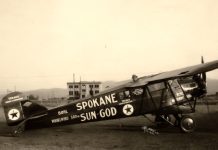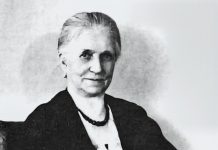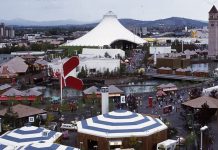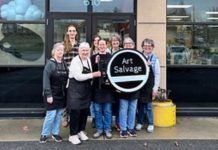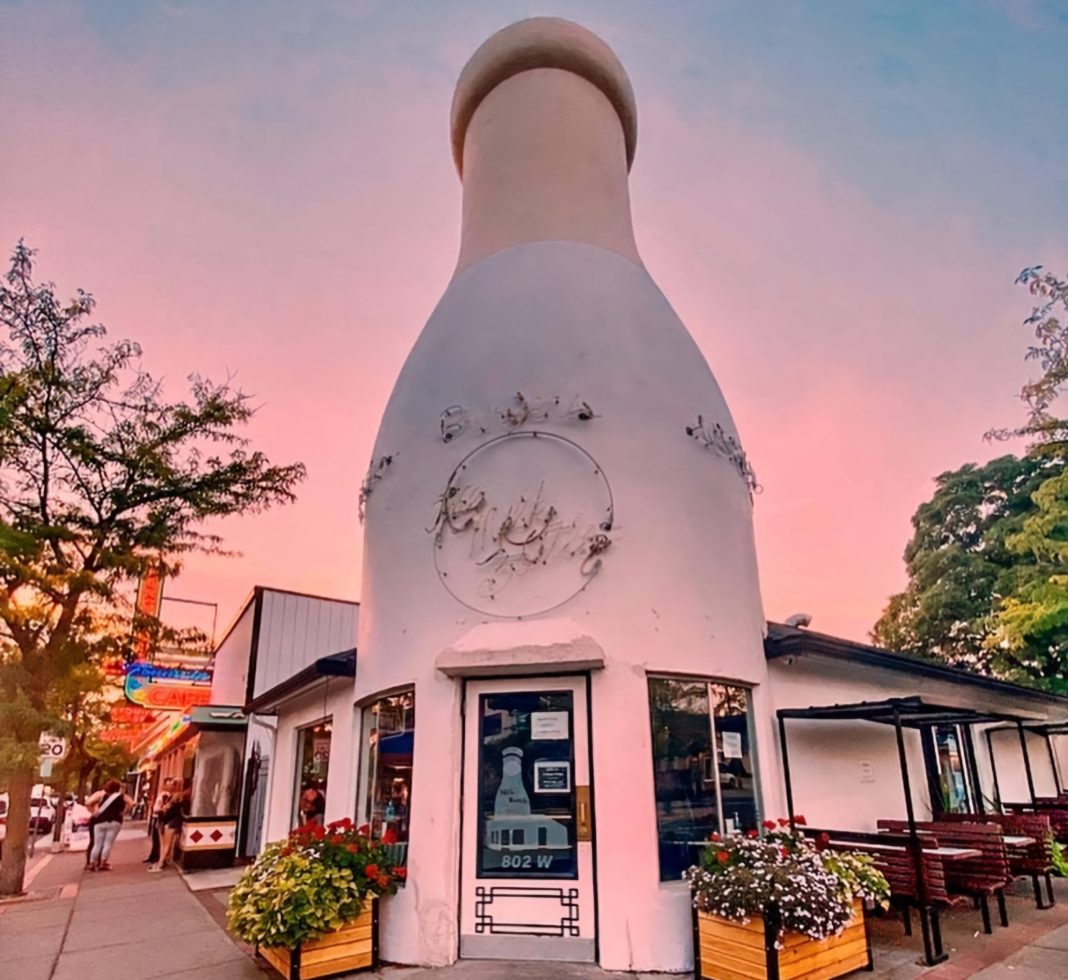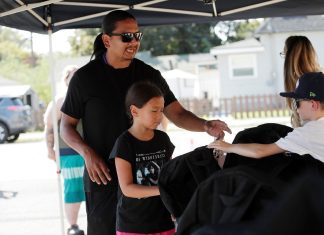Architectural oddities or ingenious marketing ploys? In the 1930s, a unique vision brought two giant milk bottles to life on the streets of Spokane. Originally designed to catch the eye and promote dairy consumption, today, they are a beacon of familiarity, a quirky landmark amidst the cityscape that holds a surprising amount of history within their whimsical walls. Beloved Spokane icons that they are, their story offers a fascinating glimpse into Spokane’s architectural heritage and the city’s evolving relationship with food culture.
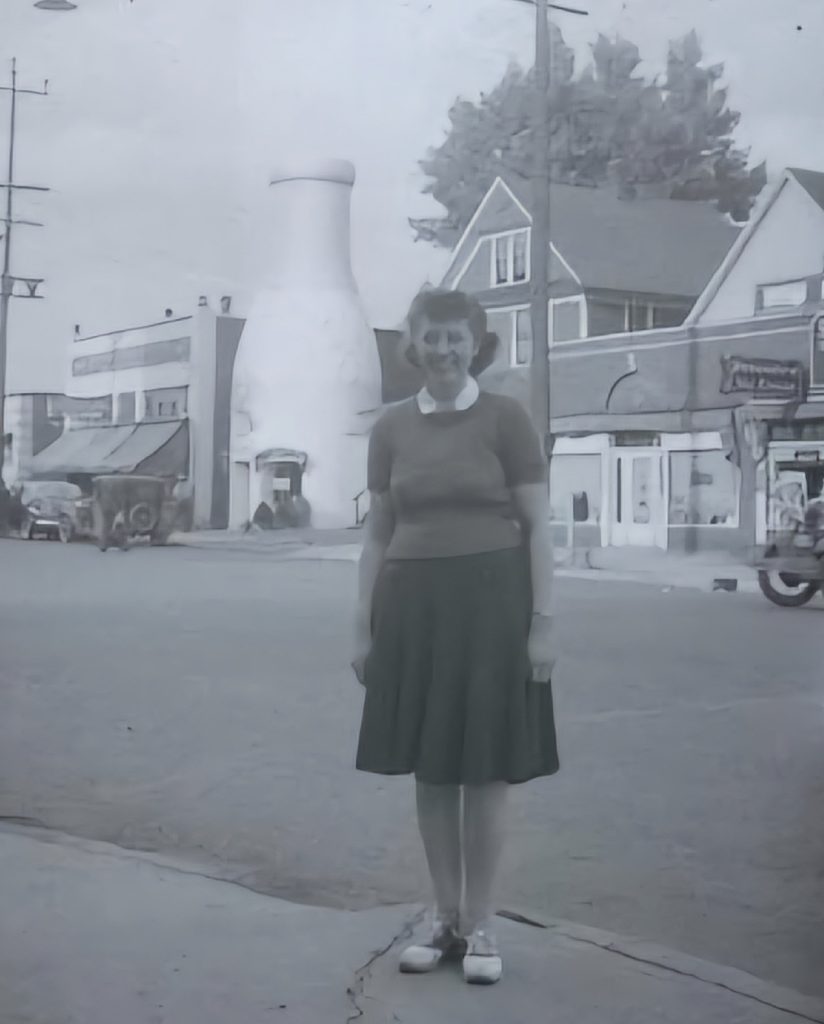
The Rise of the Benewah Creamery in Early Spokane History
In 1922, the Benewah Creamery churned its way into Spokane’s dairy scene. Paul E. Newport, born in St. Paull, Minnesota, founded the creamery in St. Maries just a few years prior in 1917, before moving to the city to set up a processing plant on First Avenue and Washington Street. He bought raw milk from local farmers and used it to make products such as cheese and ice cream.
At a time before the creation of the “supermarket,” Newport had to get creative in how he sold his products, initially operating retail stalls in open markets, where he was one of the many independent vendors housed in a single building. Despite the competitive market, Newport’s merchandise stood out from the rest. His dairy products became well known for their premium quality, high in butterfat and milk flavor, and his plant used the best modern sanitary practices around, with the milk being pasteurized.
Needless to say, by 1935, the business was booming, and Newport was already envisioning a novel way to promote the company even further, thus coming up with the ingenious and innovative idea of creating buildings shaped like the very product he sold — milk bottles. Company ads stated the bottles were “designed to build better men and women by making dairy products attractive to boys and girls. No expense will be spared to make these new stores as sturdy as fine and as good as the products they represent.”
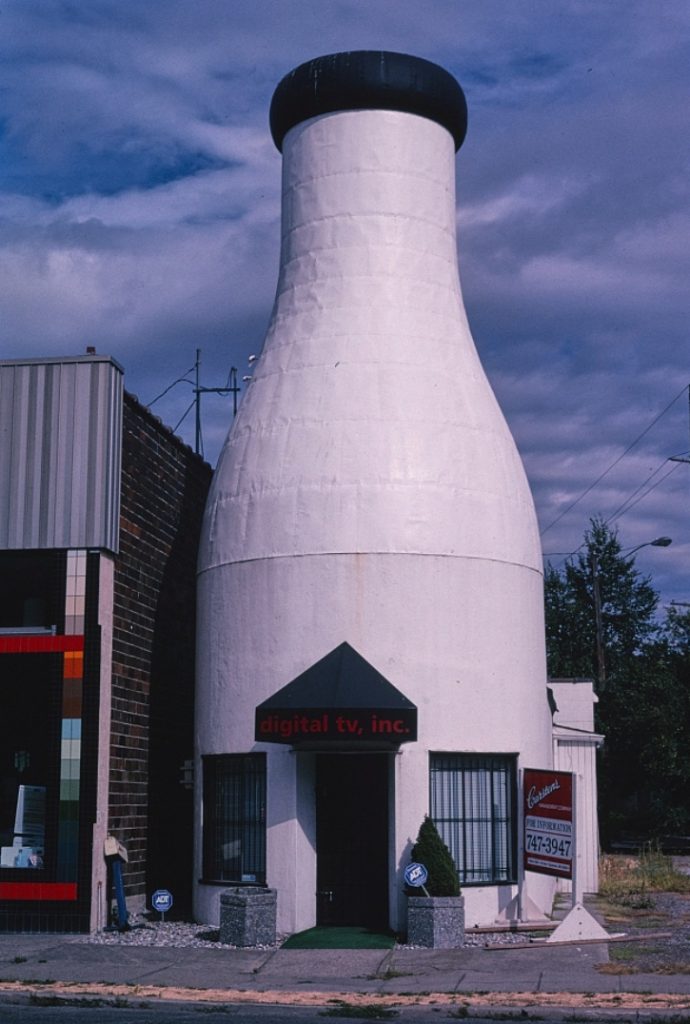
Mimetic Marvels: The Construction of Spokane’s Twin Milk Bottles
Of course, this wasn’t just some whimsical idea of Newport’s; it was a nod to the emerging architectural style of “mimetic” or “literalist” design. This particular type of architecture seeks to combine form and function, allowing the building itself to become its own best advertisement.
An excited Newport was ready to throw everything he had into his newfound plan, and he wasn’t stopping at just one bottle. Initially, he planned to build a total of six of these iconic outlets, each costing a whopping $3,700 to build. Upon completion, they were to serve as concession stands to lower prices by “eliminating charge accounts and delivery service,” basically cutting out the need for stalls in open markets. Adding to Newport’s ambition, he initially intended to create six milk bottles. However, plans for the other four were scrapped, most likely due to the Depression-era economy at the time of construction.
Designed by the prestigious architectural firm Whitehouse and Price and built by contractor W.G. Myers, the first of the Benewah Milk Bottles was built in 1935 in what is now Spokane’s Historic Garland District. The second bottle, these days known as the Benewah Milk Bottle, was erected on South Cedar Street in Downtown Spokane.
As Newport expected, the 38-foot-tall eye-catching buildings drew in the crowds, furthering his company’s success as he went on to create Benewah Market in 1938. Both buildings operated as retail dairy locations for forty years under Newport family ownership until 1974, when the Benewah Creamery sadly went out of business.
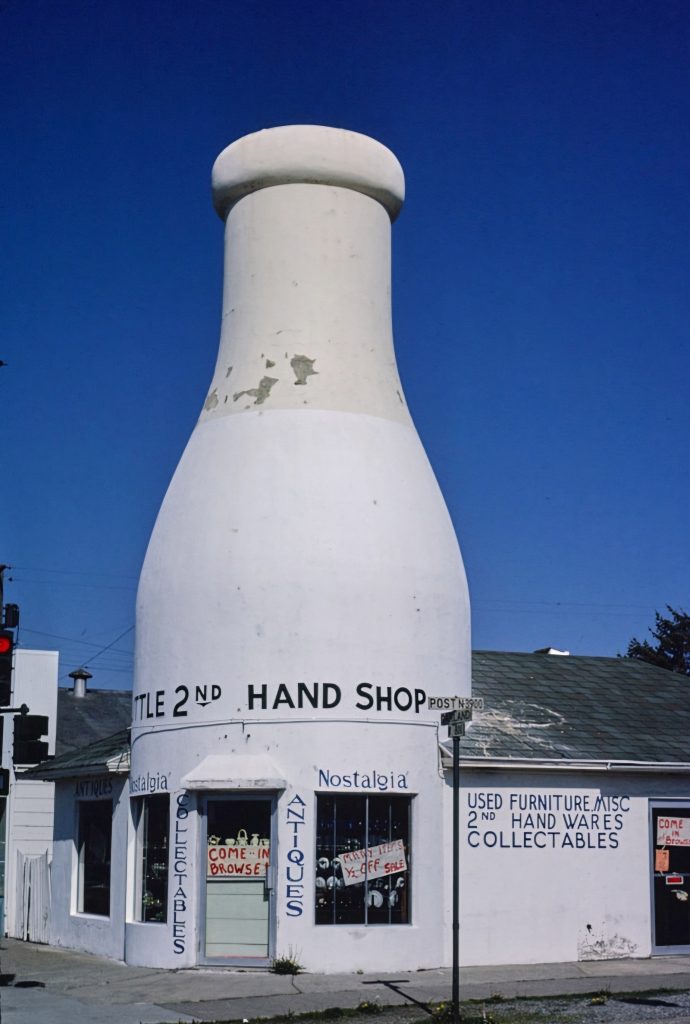
John Margolies
From Moo to More: The Benewah Milk Bottles Refill Their Purpose
Though the creamery may have closed, Spokane’s beloved Milk Bottles had yet to lose their charm and thus began anew, albeit leading very different lives from one another. Between the two, the milk bottle on Cedar Street has led a more colorful life, hosting a multitude of businesses throughout the decades that had absolutely nothing to do with dairy products.
At one point, it was even home to the Spokane County Democratic Committee, and most recently, it was a physical therapy clinic before becoming the home of Spokane’s improv group, the Blue Door Theatre, in 2023. As of 2024, ice cream has officially returned to the Benewah Milk Bottle with the recent grand opening of The Mix, a new ice cream shop that’s also serving up desserts, candies, and all sorts of joy.
As for the milk bottle on Garland Avenue, it first came under the ownership of Shirley Wright and Virginia Burrill, undergoing a total transformation as it became known as “A Little 2nd Hand Shop in the Giant Milk Bottle.” During this time, it began selling a “mishmash of castaways ranging from old postcards that sell for 25 cents to an 1890 Chippendale slant-front desk that sells for $2,500.” It operated as such until 1986 when the milk bottle was converted once again, this time returning to its roots and functioning as an ice cream and dessert parlor under the new ownership of Bill and Nola Graham.
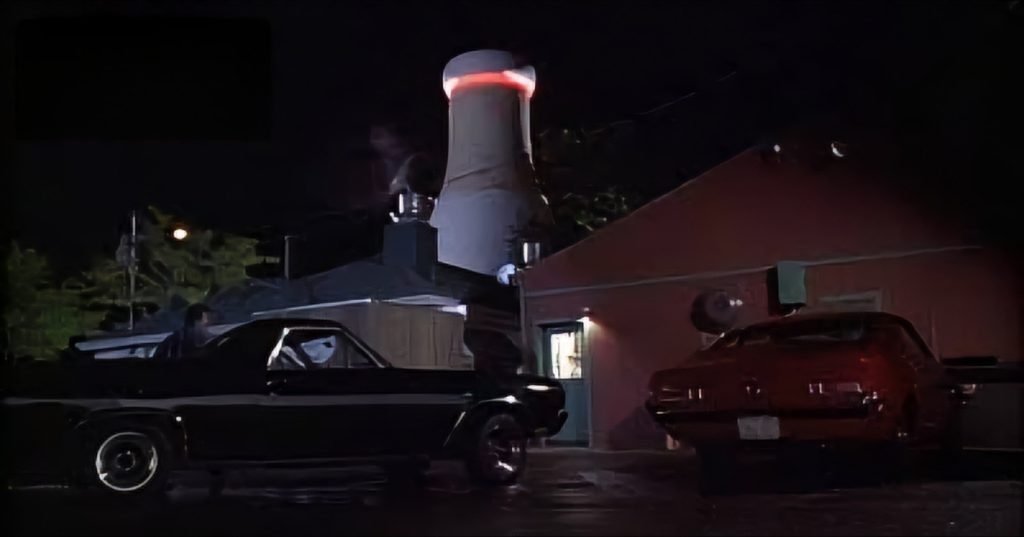
Now the famous Mary Lou’s Milk Bottle, this old-timey diner with award-winning milkshakes, along with homemade burgers and sandwiches at prices so good you’ll think it’s the 1950s, fills and nourishes the soul of Spokane itself. Even when a fire struck in September of 2011, burning most of the Milk Bottle and the neighboring Ferguson’s Café, it still persevered. Firefighters arrived just in time to douse the flames just before the bottle was on the verge of collapsing, and thankfully, after a year of restoration, Mary Lou’s Milk Bottle was returned to its former glory.
Today, Spokane’s milk bottles stand as a testament to a bygone era when innovative marketing and playful architecture captured the public’s imagination. These treasured, quirky landmarks continue to draw visitors, reminding us of the power of nostalgia and, if you’re stopping by Mary Lou’s, the enduring love for a good milkshake.


